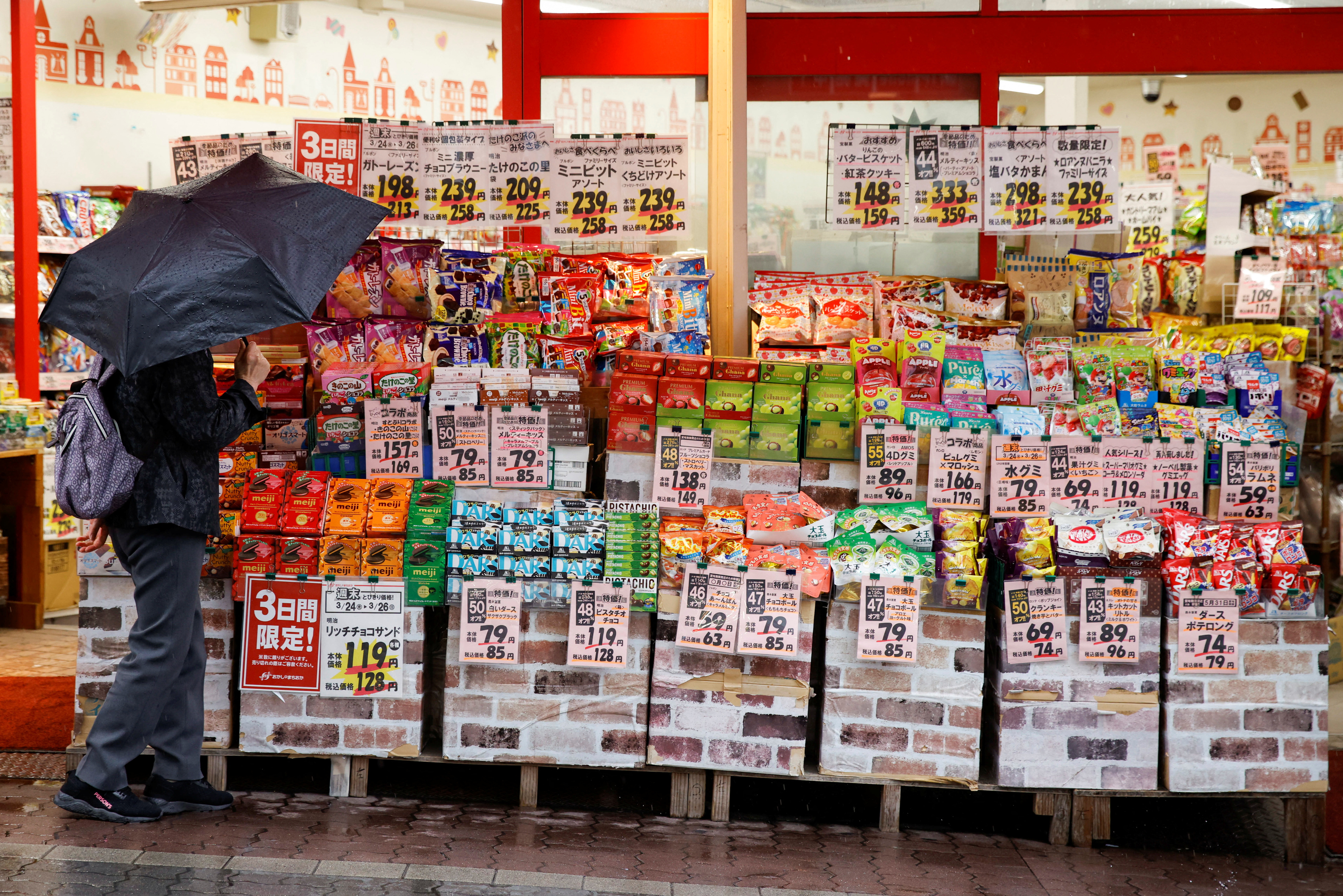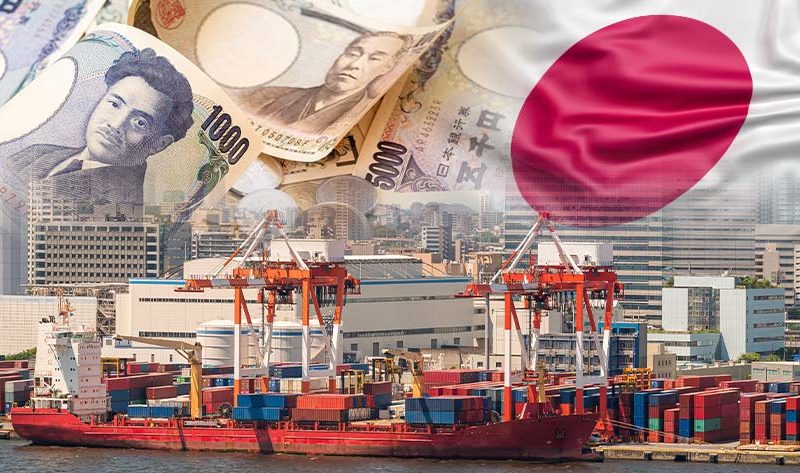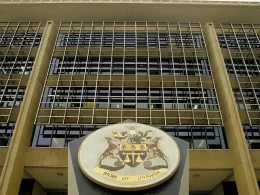Japan Core Inflation Is Slowing Down But Exports Are Falling Down
Japan’s key inflation gauge slowed in September for the first time in five months, ahead of a central bank meeting later this month where the board is widely expected to keep the interest rate unchanged.
Consumer prices, excluding fresh food, rose 2.4% from a year earlier, decelerating from 2.8% in August as government utility subsidies softened the impact of ongoing inflation, the internal affairs ministry said Friday.
The result came in slightly stronger than the consensus estimates of 2.3%.
The slowdown in price gains largely hangs on government subsidies, making it likely to have a limited impact on the Bank of Japan’s policy path, provided there are no other signs of weakening in the trend.
For Prime Minister Shigeru Ishiba, a waning of inflation may help his case as he heads into a general election on Oct. 27.
“If the subsidies are extended, it’ll bring down CPI (consumer price index), but it doesn’t impact the price trend, itself,” said Yoshiki Shinke, senior executive economist at Dai-Ichi Life Research Institute. “So, we shouldn’t be overly concerned about those moves. The BOJ’s decision is unlikely to change on this.”
Overall inflation slowed to 2.5% from 3.0% in August.
Drops in electricity and gas prices drove the gauge lower, with the government’s subsidies knocking 0.55 percentage point off.
A deeper index, excluding energy costs and fresh food prices, rose to 2.1% from 2.0% in the previous month.
Service prices, seen by the BOJ as a key measure to examine the price trend, gained 1.3% from a year earlier, slowing from 1.4% in August.
The BOJ is widely expected to leave the benchmark rate at 0.25% on Oct. 31.
The central bank’s communication remains in focus after the BOJ came under fire for its last interest hike in July, which was followed by a global market crash shortly afterward.

The bank has maintained its stance that it will further reduce monetary easing with additional rate hikes, if inflation develops in line with its own projections.
The BOJ’s outlook will also be updated at the end of the month.
“The details in Japan’s September CPI report show surprisingly solid consumer price momentum powered by big pay gains and a weaker yen — all hidden below the softer headline reading, which sagged due to government subsidies for utilities,” said Taro Kimura, economist at Bloomberg Economics.
Inflation may reaccelerate in the coming months if the government’s utility subsidies expire as scheduled this month.
A report by Teikoku Databank also showed food companies raised the prices of 2,911 items in October.
The yen’s relative weakness is also likely to keep inflationary pressure high via import prices.
The Japanese currency has lost some gains over the past few weeks against the dollar as the U.S. economy remained resilient.
It reached the ¥150 level against the dollar again Thursday evening.

But inflation may also be pushed lower by an upcoming economic stimulus package, funded by a larger extra budget than last year.
Ishiba said the package will focus on price relief measures, such as cash handouts for low-income households, as he aims to shore up public support ahead of this month’s general election.
“All the political parties are proposing pork-barrel spending in their election campaigns,” said Takeshi Minami, chief economist at Norinchukin Research Institute. “I think price measures will be continued whatever happens.”
Japan’s inflation has stayed at or above the BOJ’s 2% target for two and half years.
But, so far, Ishiba’s government hasn’t declared an exit from deflation and has called for a cautious judgment on the pace of the BOJ’s interest rate hikes.
The new administration, which started on Oct. 1, aims to achieve wage growth beyond the pace of inflation so that households will keep spending and cope with inflation better, supporting a positive economic cycle.
This year, labour unions won the biggest wage growth in years, which along with chronic labor shortages, helped pay checks increase for a broad range of workers.
Still, real wages adjusted for inflation fell again in August after rising for the previous two months, and consumption remains lacklustre.
Japan Exports Are Falling Down
Japan’s exports declined by the most since February 2021 in September, sapping momentum from the country’s economic recovery as global demand weakened.
Exports declined 1.7% from a year ago, led by cars, mineral fuels and construction machinery and slipping to negative growth for the first time since November last year, the Finance Ministry reported Thursday. The reading missed economists’ forecast of a 0.9% gain.
Imports rose 2.1%, led by electronic calculators and semiconductor parts, and slightly missing the consensus estimate of a 2.8% gain, while the trade deficit narrowed to ¥294.3 billion ($2 billion).
Thursday’s results indicate that Japan’s economy likely received limited support from external demand in the third quarter amid a global slowdown. Japan’s economy expanded in the three months through June, partly driven by a rise in private consumption, though the growth also appeared to be a temporary rebound after a deep contraction in the prior period.
“It’s a weak result,” said Yayoi Sakanaka, senior economist at Mizuho Research & Technologies, adding that net exports will likely be a drag on the third quarter. “Looking ahead, though the yen is slightly weaker again, I don’t think it will be a tailwind for exporters” given that other stronger factors are at play, such as China’s strengthening of its own exports which will likely muscle out Japanese shipments.

The weaker exports reflect sluggish global growth amid growing uncertainty about the outlook in major economies. Shipments to China sank 7.3%, reversing gains of 5.2% the month before, while those to the U.S. and Europe fell 2.4% and 9%, respectively. The World Trade Organization recently suggested that global goods trade in 2025 will grow less than initially forecast, as rising instability weighs on economic activity and threatens to disrupt shipments.
Still, central banks have started to cut interest rates to avoid deeper slowdowns. Last month, the Federal Reserve announced a half-percentage-point rate cut to sustain its economy, following a similar decision by its European counterpart. The European Central Bank is expected to lower rates again at its meeting Thursday.
The Bank of Japan is closely monitoring global trends, especially in the U.S. and China, Deputy Governor Ryozo Himino said last week. Himino suggested employment and consumption data in these countries are becoming increasingly important for the bank’s decisions. In last month’s policy statement, the central bank noted that overseas economies have generally experienced moderate growth.

The BOJ will meet at the end of the month, with most economists expecting it to maintain current settings, according to a Bloomberg survey last month.
“While a weak overseas economy is one hurdle for the BOJ to raise interest rates, I believe the bank is more focused on domestic prices and exchange rate levels,” said Mizuho’s Sakanaka.
Japan’s currency remains another source of uncertainty, with the yen approaching the ¥150 to the dollar level. Finance Minister Katsunobu Kato recently said that he will closely watch both the positive and negative impacts of yen moves on Japanese businesses. While a weak yen can boost exporter profits, it also raises import prices, impacting households through increased costs, he said.
In the September trade report, the yen averaged ¥144.27 to the dollar, 1.5% stronger than a year ago, the ministry said.









